Contents
Almost 20 years ago, VNIIGRZH received a new breed group of chickens, which in 2007 was registered as a breed called Pushkinskaya. The Pushkin breed of chickens was not named in honor of the great poet, although after his “Golden Cockerel” the name of Alexander Sergeevich could also be immortalized in the name of the breed of chickens. In fact, the breed is named after the place of breeding – the city of Pushkin, located in the Leningrad region.
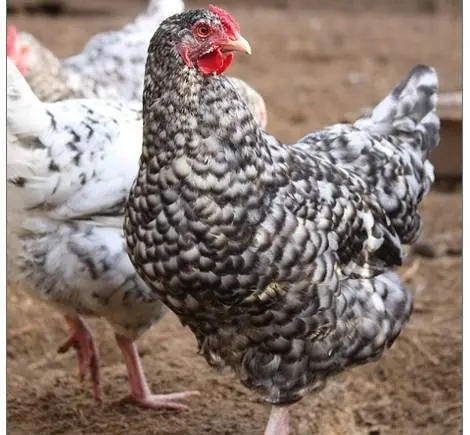
The practical experience of the owners of Pushkin’s chickens is at odds with the theoretical and advertising information on Internet sites.
Breed origin
General information is the same for the “virtual” and “real” description of the breed, therefore, with a high degree of probability, they correspond to reality.
At the same time, the breed was bred at two breeding stations: in St. Petersburg and in Sergiev Posad. Types were intermixed, but even now differences are noticeable.
Breeding began in 1976. The breed was bred by crossing two egg breeds: the black and variegated Austrolope and the Shaver 288 Italian Leghorn. The result obtained did not satisfy the breeders, the egg indicators of the cross turned out to be lower than that of the parent breeds, with a small body weight of a standard egg laying hen. And the task was to get a universal chicken for personal farmsteads with high egg production and lethal meat yield.

To eliminate the lack of weight, the hybrid of Austrolorp and Leghorn was crossed with the breed of broilers “Broiler – 6”. We got a result that almost satisfies the authors of the breed group with a relatively high egg production and a large body. But the shortcomings in the newly bred breed group still remained.
The standing leaf-shaped comb of chickens could not withstand the frosts, and the blood of Moscow white chickens was added to the new chickens at the St. Petersburg Breeding Center. The new population had a pink crest, which to this day distinguishes it from the population of Sergiev Posad.
Description of the Pushkin breed of chickens
The modern Pushkin chicken breed is still divided into two types, although they continue to mix with each other and, apparently, the breed will soon come to a common denominator.
Pushkin chickens are large birds of a variegated color, which is also called striped black, although this does not always correspond to reality. Due to the mixture of many breeds, chickens have certain deviations in one direction or another. In particular, Pushkin’s hens are darker than roosters. Roosters are predominantly white. Also, the St. Petersburg type, to which additional breed was poured, may look speckled, not striped. But on individual feathers, as a rule, black and white stripes alternate.
The head is medium-sized, with orange-red eyes and a light beak. The crest of the Sergiev Posad type is leaf-shaped, standing, and that of the St. Petersburg type is rose-shaped.
In the photo on the left are birds of the St. Petersburg type, on the right – Sergiev Posad.

Metatarsus in chickens is long with widely spaced fingers. A long, high-set neck gives the “chicken pockmarks” a regal posture.
Pushkin chickens never acquired the size of broiler meat breeds. However, this is not surprising, initially the breed was planned as a universal meat and egg breed. Therefore, the main attention was paid to the quality of meat and the number of eggs.
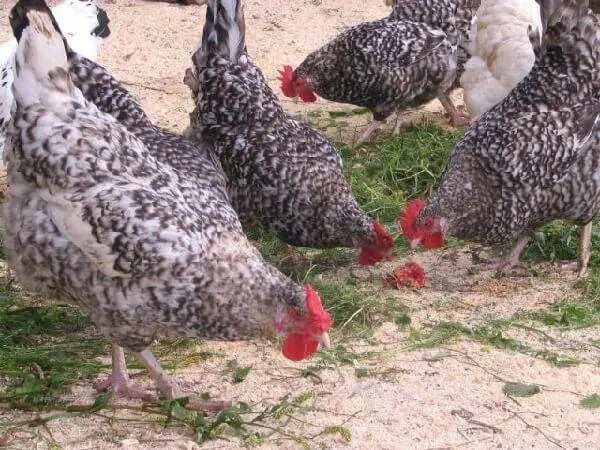
The weight of hens of the Pushkin breed is 1,8 – 2 kg, roosters – 2,5 – 3 kg. The St. Petersburg type is larger than the Sergiev Posad type.
“Kurochek Ryab” is bred today by private farms and household plots. Buying chickens from a farm that has a good reputation is more reliable than from a private owner who may keep unpurified birds. Especially if a private trader keeps several breeds of chickens at once.
Hens start laying eggs at 4 months old. Egg production characteristics: about 200 eggs per year. Eggshells can be white or cream. Weight 58 g. But from this moment the divergence of theory and practice begins.
The owner of the Pushkin chickens on the video using scales proves that the average egg weight of Pushkin chickens is 70 g.
Weighing (comparison) eggs of hens of breeds Pushkinskaya and Ushanka
The network claims that Pushkin’s chickens do not fly, are very calm, do not run away from humans, and get along well with other birds. Practice shows that from what is written, only the last is true. Chickens get along really well with other birds.
The weight of these hens is small, so they fly well and actively run away from the owner, naughty in the garden.
But for egg production, tasty meat, beautiful color and unpretentiousness, the owners of the Pushkin breed forgive her the discrepancy between the descriptions on the sites and the real characteristics.
The differences between individuals of different types in more detail in the video:
In the same video, the owner-tester shares his impressions of the Pushkin breed, including the differences between breed descriptions on websites and the real state of affairs.
Since the breed has not yet settled down, there are no strict requirements for the appearance of chickens, but there are certain vices in the presence of which the chicken is excluded from breeding:
- the presence of pure black feathers in the plumage;
- hunched back;
- body of irregular shape;
- gray or yellow fluff;
- white tail.
The breed has a number of advantages, for which you can put up with the excessive mobility and sneakiness of these birds:
- in Pushkin’s chickens, the carcass has a good presentation;
- endurance;
- unpretentiousness to feed;
- ability to tolerate low temperatures;
- good chick keeping.
The percentage of egg fertility in the Pushkin breed is 90%. However, fertility does not guarantee the same high chick hatch. Embryos may die in the first or second week. The safety of hatched chickens is 95%, but at a more mature age, up to 12% of young animals may die. Mostly from diseases from which no breed of chickens is insured.
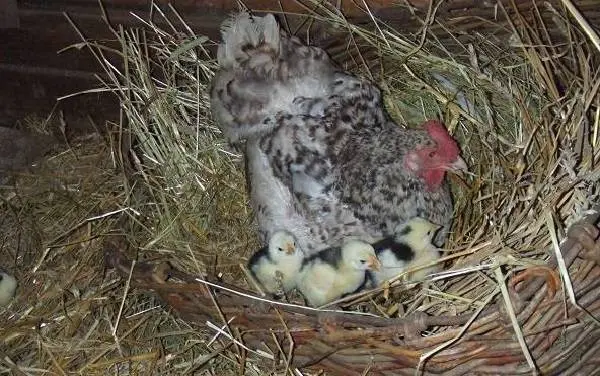
The content of Pushkin’s chickens
For Pushkin, an insulated barn is not required, the main thing is that there are no drafts in it. If the plans are to keep chickens on the floor, then a deep warm bedding is arranged on it. But since the statement about the non-volatility of these “ripples” is false, you can arrange standard chicken perches.
For laying eggs, it is better to arrange separate nest boxes lined with straw.
It is also undesirable to put sawdust on the floor as a bedding even in a thick layer. Firstly, dry sawdust cannot be compacted to a dense state. Secondly, wood dust from sawdust, getting into the respiratory tract, causes fungal diseases in the lungs. Thirdly, chickens will dig up sawdust bedding to the floor, even if they can be tamped down.
Long blades of hay or straw get entangled with each other and are much more difficult to tear.
It is possible to lay sawdust in a chicken coop under straw only in one case: if straw in the region is much more expensive than sawdust. That is to save money.
For Pushkin chickens, floor content is often used, but they will be grateful if they arrange perches 80 cm high and with a small ladder for ascent and descent.
Feeding
Pushkinsky are unpretentious in feed, like any village laying hen. Avoid giving them sour waste or birds eating sour wet mash in the summer.
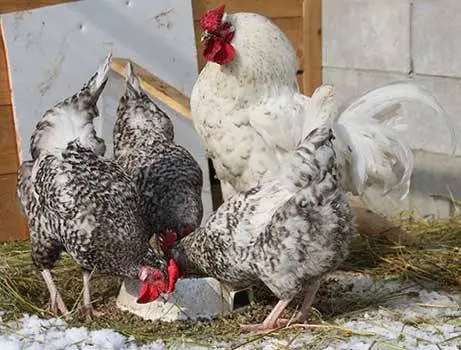
For this reason, you should not be particularly zealous with grain feed.
Shell and coarse sand should be freely available.
Breeding
Due to mixing breeds with a well-developed incubation instinct when breeding Pushkin chickens with those who do not have this instinct, Pushkin’s behavioral failures are observed. A mother hen can leave her nest after spending a few days. To avoid such incidents, chickens are hatched in an incubator.
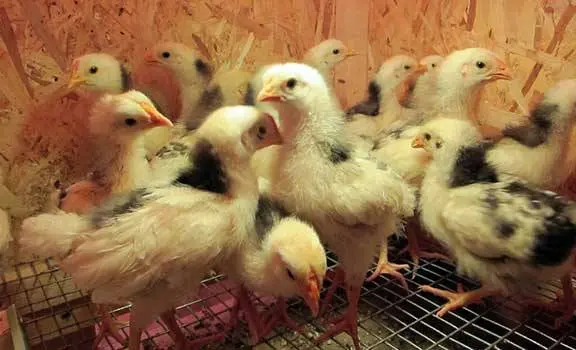
To obtain an incubation egg, 10-12 females are determined per rooster.
Feedback from the owners of Pushkin chickens
Conclusion
Pushkin’s chickens were bred as classic village “pockmarked chickens”, adapted to life in the village and capable of giving the maximum result with a minimum of care. Their only drawback, from the point of view of a villager who wants to breed these birds, may be the reluctance to incubate eggs. But this is fixable if there are other chickens in the compound.









